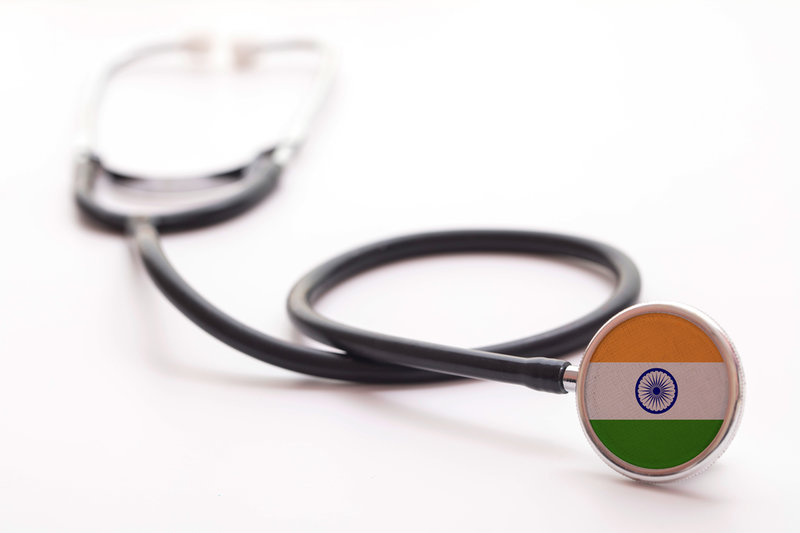Regulation
Devices are not drugs: rethinking medical device regulation in India
The Indian medical device industry is the fourth-largest in Asia, but the country does not have a specific regulatory process for these complex, unique products, and instead chooses to assess them as drugs. Allie Nawrat talks to AiMeD forum coordinator Rajiv Nath about the inadequacy of the current situation and how it should be resolved.
I
ndia’s medical devices industry is increasing at a compound annual growth rate of by 15.8%, which is significantly higher than the global average of 4.1%, according to Invest in India. The government agency estimates India’s current medical device market is worth $11bn, making it the fourth-largest in Asia, and predicts it will increase almost five-fold by 2025.
Despite this, shockingly, India does not have a centralised approach for regulating medical devices. Instead, the country relies on the regulatory oversight of other countries for imported devices and has attempted to classify a few medical devices as drugs.
This creates a situation where the majority of medical devices have not been evaluated for safety or quality, potentially putting patients’ health, or even lives, at risk. In 2018, an investigation by the International Consortium of Investigative Journalists (ICIJ) and other media partners found serious loopholes in India’s regulatory landscape and that various devices were linked to at least 500 incidents since 2014.
These findings coincided with revelations that thousands of hip replacement devices manufactured by the Indian division of Johnson and Johnson were faulty; according to Indian Express, this led to at least four patient deaths following implantation. These devices had been recalled by the US Food and Drug Administration in 2010.
In response to the ICIJ’s so-called ‘Implant Files’, the Indian Government moved to regulate all medical devices as drugs. However, this is viewed as inadequate as a long-term measure by stakeholders in the Indian medical device industry, particularly the Association of Indian Medical Device Industry (AiMeD), because devices and drugs are not the same and pose different dangers to patients’ health.Instead, there is pressure for the Indian Government to prioritise patient safety by creating separate legislation and a new regulatory body focused on medical devices.
Charting the government’s promises of reform
In response to new challenges posed by the growing medical devices market, the Indian Ministry of Health and Family Welfare (MOH&FW) initiated a four-step process in 2016, starting with the Medical Device Rules (MDR). These came into force in January 2019 and created classifications for medical devices based on risk.
The MDR would then be amended after six months based on lessons learned, and it would support the drafting of a separate Medical Devices Bill, as well as an eventual Medical Devices Law.
However, for unknown reasons the Indian Government elected to abandon this approach, and in October 2019 announced it would instead expand upon a previous policy, whereby all medical devices would be defined as drugs; before this, only 24 of 5,000 categories of medical devices were regulated in this way. This would bring medical devices under the purview of the Drugs and Cosmetics Act 1940 and the Indian Central Drugs Standard Control Organisation (CDSCO). This regulatory approach will be rolled out gradually throughout 2020.
AiMeD forum coordinator Rajiv Nath notes that the notifications of this action by the MOH&FW surprisingly did not suggest that there were any plans to migrate medical devices to a separate act, thereby creating “huge confusion and apprehension among domestic manufacturers”.

Treating devices as drugs: a recipe for disaster?
Although this leads to more general oversight over medical devices than the previous system, Nath is clear that drugs and medical devices are not the same. He notes: “Medical devices are engineering items and not drugs. A MRI or CT scanning machine by no stretch of the imagination can be called a drug.”
“Patient safety is more complex with devices…[and] is the shared responsibility of the manufacturer, medical practitioners, product user and regulator,” Nath adds.
“Medical devices are engineering items and not drugs.”
In addition, Nath notes the inadequacies of the CDSCO and the Drugs Act 1940, stating: “The Drugs Act itself needs reforms as it does not uniformly and equitably regulate quality from state-to-state. The recent J&J episode showed the limitations. There is no point replicating this limitation for devices too.”
He points out that food is not regulated under the Drugs Act or CDSCO, so why can there not be a similar model for medical devices?
The need for separate device legislation and regulation
Some of the manufacturers of products that fall under the original 24 device classifications already regulated by CDSCO are happy to continue to be regulated by this body, but only if it is “revamped with a medical devices-specific division” and staffed with competent experts.
However, Nath explains that AiMED and other stakeholders are pushing for a separate national regulatory body and legislation that will not view devices in the prism of drugs.
“The draft bill proposes to ensure medical devices in India are safe and effective.”
A good start would be a clear, official road map from the integration of devices and drugs with a defined transition period towards a new Medical Device Law, such as the one being drafted by think tank Niti Aayog.
“The draft bill proposes to ensure medical devices in India are safe and effective,” says Nath. “Further, the bill should create an enabling ecosystem for manufacturing, research and innovation. [It] aims to improve quality, enhance transparency, make it easier for the sector to do business, and formalise a regulatory and compensation framework.”
Nath calls for the government to move in line with the work being done by Niti Aayog to “address the regulatory vacuum”, arguing that doing so will improve India’s already promising standing in this industry, while also ensuring these devices are actually improving, not damaging, people’s health.